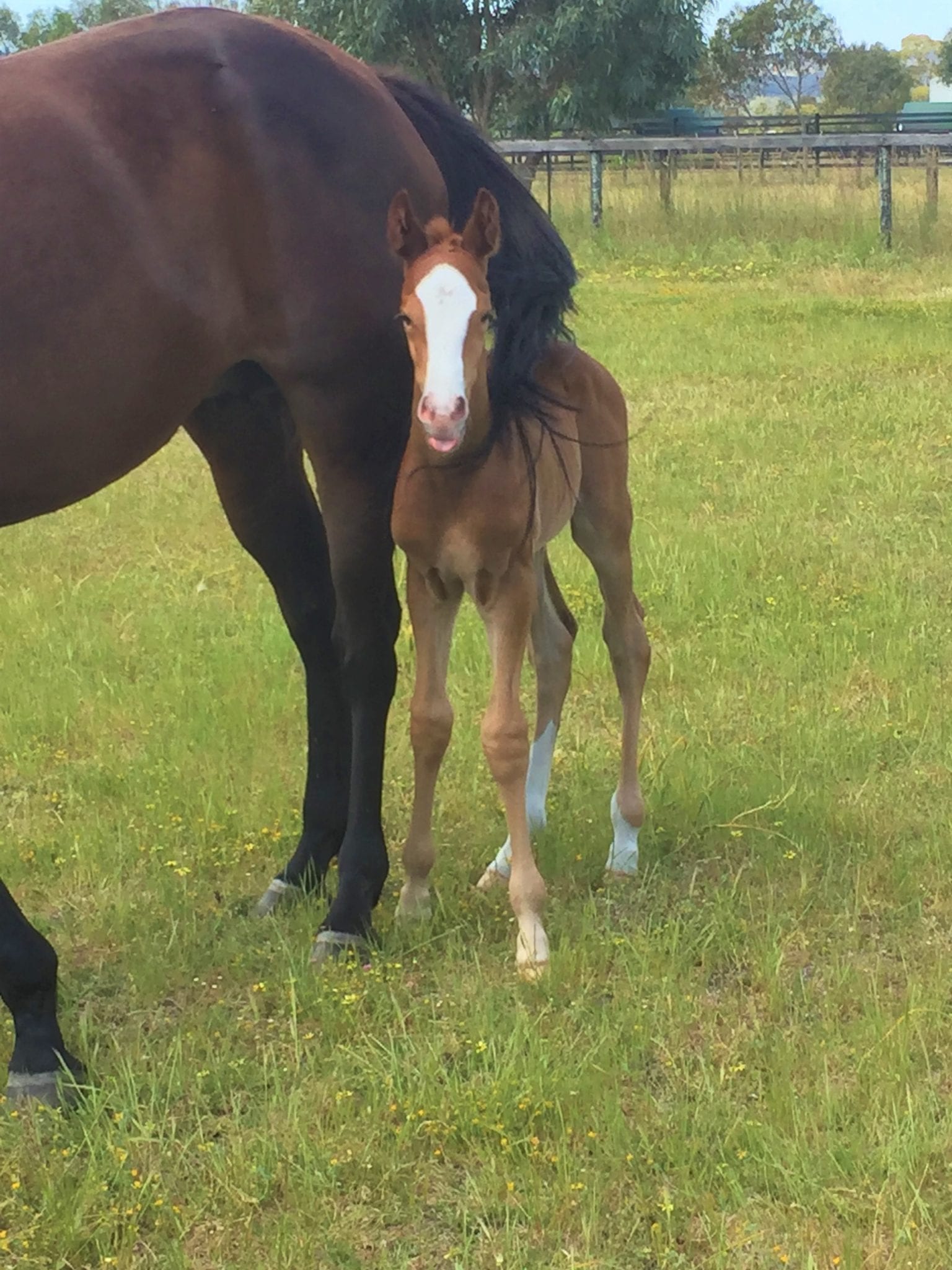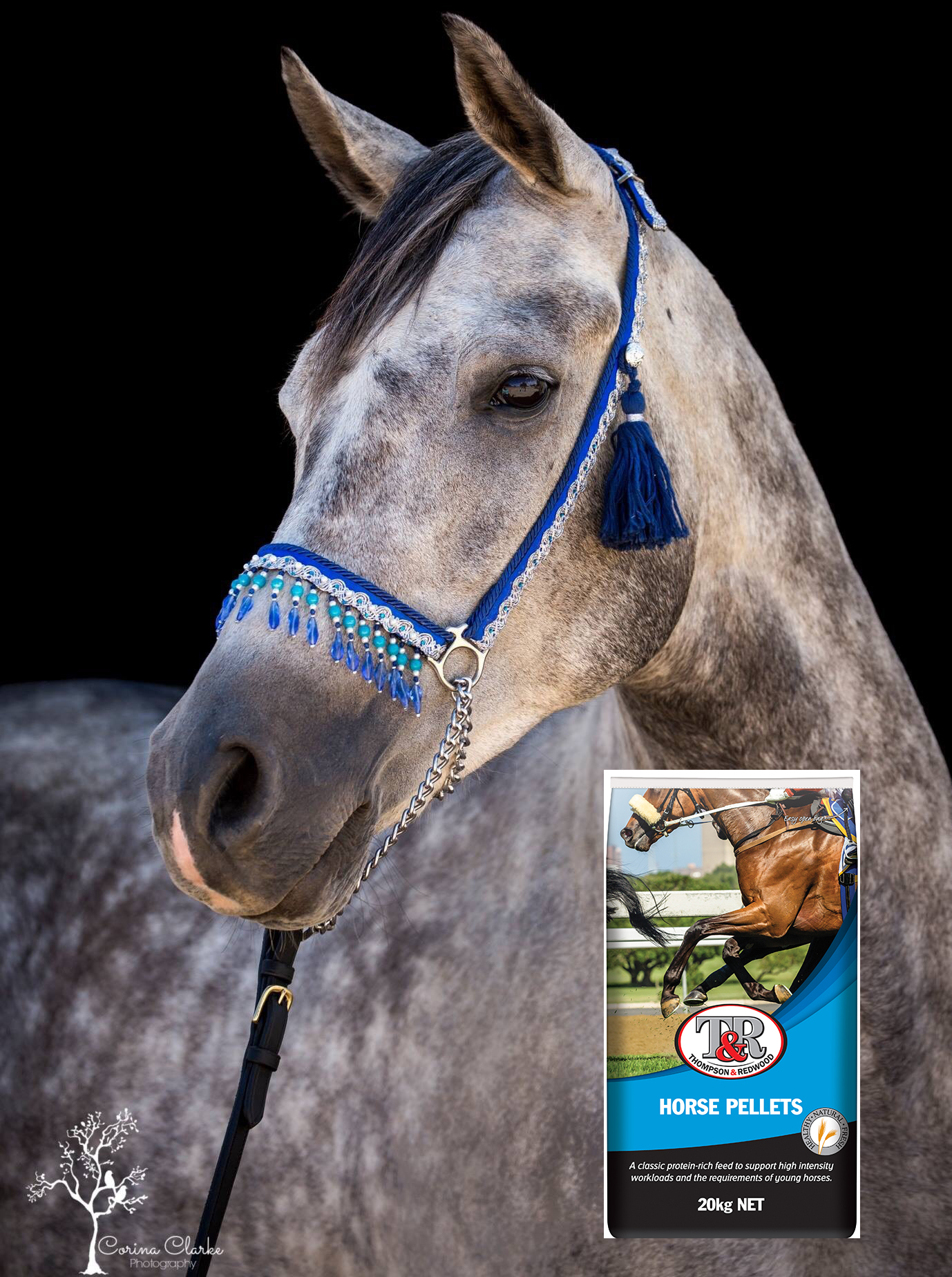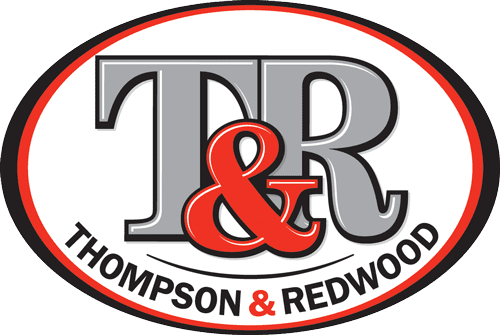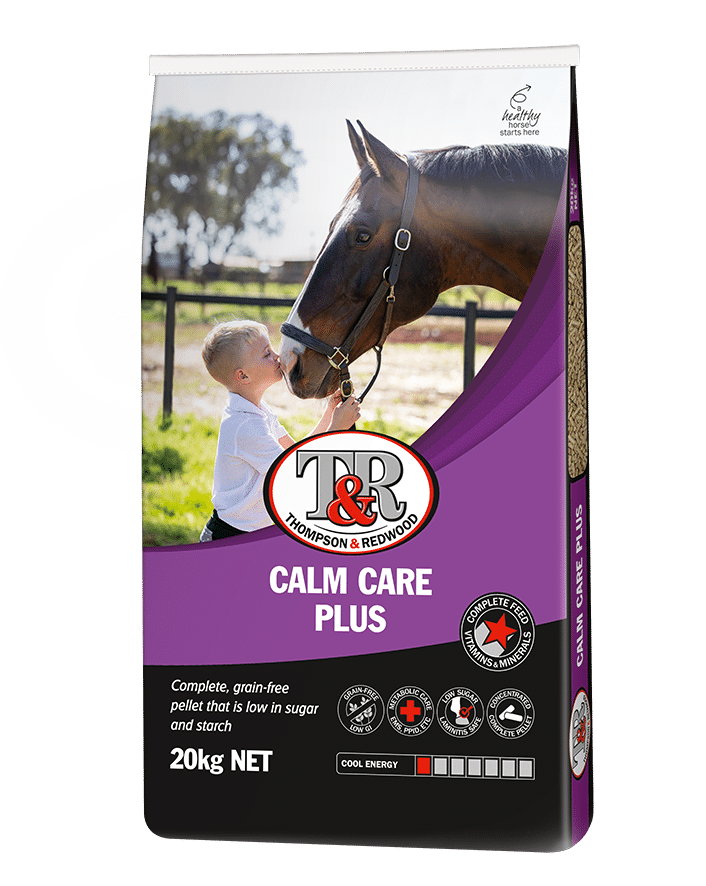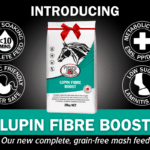
From grass roots to high performance, we have an equine feed to suit
A feed for (almost) every animal on the farm
Quality
Ruminant feeds to support productivity
We’re passionate about poultry
superior feed for broodmares, young stock & commercial studs
with added pre & probiotics
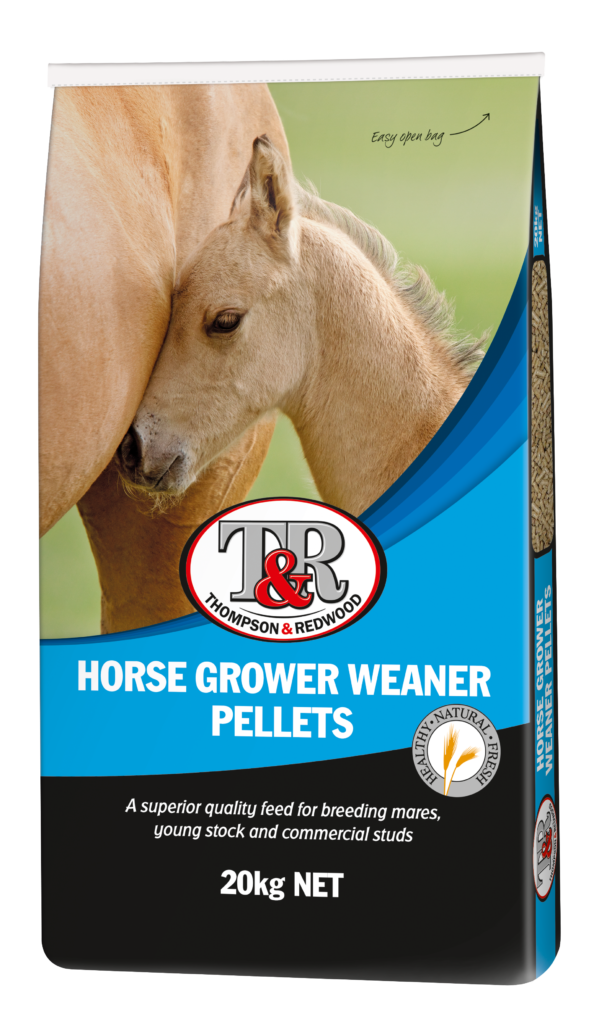
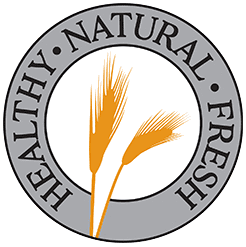
Making healthy, natural and fresh stock feed since 1985
Thompson & Redwood makes affordable and nutritionally balanced stock feed for the horse and agricultural
industries. Our recipes never change and are milled daily from Western Australian grain so you know what
you’re feeding is healthy, natural and fresh.
What's your
horse feeding challenge?
- Fizzy horse?
- Poor keeper?
- At risk of laminitis?
![]() Let our veterinary and nutrition team support you and your horse with our carefully formulated complete horse feeds.
Let our veterinary and nutrition team support you and your horse with our carefully formulated complete horse feeds.
Find the feed most suited to your horse or pony.
What's your
horse feeding challenge?
- Fizzy horse?
- Poor keeper?
- At risk of laminitis?
![]() Let our veterinary team support you and your horse with our carefully formulated complete horse feeds.
Let our veterinary team support you and your horse with our carefully formulated complete horse feeds.
Find the feed most suited to your horse or pony.
ELECTROLYTES – what are they and what role do they play for horses?
An electrolyte put very simply is a mineral that carries an electric charge when it dissolves in water, and they play essential roles in the bodies of horses, humans and all other animals. Horses lose electrolytes daily through urine, manure and sweat, and should be constantly replenished.
➡️ Sodium
➡️ Chloride
➡️ Potassium
➡️ Calcium
➡️ Magnesium
Having the right amount and ratio of electrolytes is very important for maintaining healthy function in the horse`s body, but also for promoting performance and recovery in horses with high workloads, or those that may be sweating more than average. Some of the important role`s electrolytes have include:
✅ Maintaining fluid balance inside and outside of the cells
✅ Triggering the thirst reflex and encouraging them to drink
✅ Supporting muscle function – calcium, potassium and magnesium work together to aid muscle contraction and relaxation (even helping the heart to beat!)
✅ Maintaining pH balance in the body for transporting nutrients in and out of the cells
✅ Facilitating the transmission of nerve signals
✅ Helping to prevent fatigue and dehydration and improve recovery time
Electrolytes are present in the different components of your horse`s diet, but it`s important to consider them when balancing feeds to ensure that they are getting enough to support their needs and workloads.
#electrolytes #sodium #horsehealth #horsecare #horsenutrition #horsefeed #tiptuesday
#horsehealth
May 6

#factfriday - did you know that the lower portion of a horse`s stomach has a pH 1-2, which is nearly as low as battery acid? Battery acid has a pH of around 0.8 and is one of the most corrosive substances ⚠️
The horse`s stomach is divided into main regions, the non-glandular region and the glandular region.
The non-glandular region at the top has a nearly neutral pH of between 6-7. The Glandular region is lined with glandular mucosa, and is where the gastric juices like hydrochloric acid and enzymes sit with a pH of between 1-2. The glandular portion is designed to withstand this pH, the non-glandular portion is not!
This is why horses can be susceptible to ulcers in the non-glandular region as a result of acid-splash - and an important reason why we shouldn`t work horses on an empty stomach. Providing some quality lucerne hay or forage immediately before riding can help to create a `cap` that sits on top of the acid and prevents splashing.
#horses #ulcers #horsehealth #horsefacts #horsetips #horseulcers #horseguthealth
May 2

Two Galloways mares are Leeara Park`s newest home-bred stars, so what`s their breeding motto?
"We find that the greatest asset as a breeder is to understand that no horse is perfect, and being able to identify these weaknesses, gives you the basis of choosing a stallion suitable to compliment their needs.
We are exceptionally critical of each of our mares as ultimately we are looking to improve the offspring out of each of them and find the perfect stallion to match."
Read more >>
https://thompsonandredwood.com.au/the-ins-and-outs-of-breeding-horses
May 1

PROTEIN - What does it do for your horse and why is quality important? Proteins are essential macronutrients that have many critical roles in the body and are vital for horses and ponies of all ages - around 15% of their overall body mass is made up of proteins! Protein is often misunderstood, but it is critical for horse health, function and performance. Some key roles of protein include:
✅ Tissue growth and repair
✅ Providing structure
✅ Nutrient transport around the body
✅ Immune function
✅ Regulating metabolic function
Horses get protein from their diets, and there is protein present at varying levels in their grass, hay, and feeds. However, not all protein is created equal, and each feed ingredient will have a different quantity AND quality. For example, grass might have a good amount of crude protein, but that protein quality could be low.
➡️ What determines protein quality?
Proteins are made up of amino acids which are like building blocks. The quality of a protein is determined by the type and number of essential amino acids that it contains and how digestible they are. Essential amino acids cannot be made or synthesised by the horse so must be provided through the diet. For a certain protein to be built, the correct amino acids must be supplied.
✅ A high-quality protein source contains the ideal ratio of essential amino acids which are easily digestible. This means that the body can then use most of those amino acids in protein synthesis.
❌ Low-quality proteins don`t offer as many essential amino acids, so there are a lot left over for the body to excrete.
When you look at your horse`s feed, you need to take into consideration the QUANTITY and QUALITY of the proteins in their diet. The amount of protein needed varies depending on a horses age, life stage and workload. Broodmares in late gestation and lactation, growing horses and performance horses have a higher protein requirement than a mature horse in light work.
.
.
.
#protein #horsenutrition #horsefeed #horses #proteinforhorses
Apr 28

35 years old, happy and healthy - Happy Retirement Rusty!
Rusty has taught so many kids to ride, and is now enjoying his days of retirement with Horse Cubes for Seniors and Lupin Fibre Cubes together as a nutritious mash.
#horsecubesforseniors #lupinfibreboost #oldpony #horsefeed #fuelledbytandr
Apr 22

ULCERS - Feeding strategies for prevention and care ️
Did you know that one Western Australian study found that 53% of horses had ulcers? Ulcers can lead to pain, reduced appetite, decreased performance and more. Here are some important feeding strategies that can help with prevention and care:
✅Saliva helps to buffer the acid and protect the gut, and the more they chew, the more saliva they produce! Offer plenty of ad-lib forage and fibre, day and night to keep them producing saliva and their gut functioning. 💡𝗗𝗶𝗱 𝘆𝗼𝘂 𝗸𝗻𝗼𝘄: Horses only produce saliva when chewing.
✅ Provide ad lib forage and try to keep time without available feed to a minimum. If you are worried about weight gain, limit the quality of roughage, not quantity.
✅ Look for feeds that are high in fermentable fibres and low in starches and sugars. Our Lupin Fibre Boost and Lupin Fibre Cubes are both very low in starch and high in fermentable fibres so suitable for horses with ulcers.
✅ Split your hard feeds or concentrates into as many small feeds per day as you can. More smaller feeds are better for their stomach than few large feeds.
✅ Ensure they are always well hydrated.
✅ Avoid riding on an empty stomach. Offer a small feed of lucerne hay or chaff immediately prior to riding to help prevent acid splash.
✅ Provide lots of turnout time and grazing if you can – turning your horse out helps to decrease stress, especially if they have other horses around them. Grazing also helps horses to keep producing saliva which helps to buffer the stomach.
If you suspect your horse has ulcers, please seek veterinary advice. The sooner you seek help, and your horse gets treatment, the sooner your horse can return to optimum health.
Looking for an ulcer-safe feed? Lupin Fibre Boost, Lupin Fibre Cubes and Calm Care Plus are all low in sugar and starch and safe for horses with ulcers.
#tiptuesday #ulcers #horseulcers #ulcercare #lowsugarandstarch #horsefeed #horsecare
Apr 21

Who's headed to Serpentine this weekend? Good luck to all the riders!
We'll be onsite with our trailer, so make sure you call in and see Carly 👋
... See MoreSee Less

- likes love 22
- Shares: 0
- Comments: 3
3 CommentsComment on Facebook
ELECTROLYTES – what are they and what role do they play for horses?
An electrolyte put very simply is a mineral that carries an electric charge when it dissolves in water, and they play essential roles in the bodies of horses, humans and all other animals. Horses lose electrolytes daily through urine, manure and sweat, and should be constantly replenished.
➡️ Sodium
➡️ Chloride
➡️ Potassium
➡️ Calcium
➡️ Magnesium
Having the right amount and ratio of electrolytes is very important for maintaining healthy function in the horse's body, but also for promoting performance and recovery in horses with high workloads, or those that may be sweating more than average. Some of the important role's electrolytes have include:
✅ Maintaining fluid balance inside and outside of the cells
✅ Triggering the thirst reflex and encouraging them to drink
✅ Supporting muscle function – calcium, potassium and magnesium work together to aid muscle contraction and relaxation (even helping the heart to beat!)
✅ Maintaining pH balance in the body for transporting nutrients in and out of the cells
✅ Facilitating the transmission of nerve signals
✅ Helping to prevent fatigue and dehydration and improve recovery time
Electrolytes are present in the different components of your horse's diet, but it's important to consider them when balancing feeds to ensure that they are getting enough to support their needs and workloads.
#electrolytes #sodium #horsehealth #horsecare #horsenutrition #horsefeed #tiptuesday
#horsehealth
... See MoreSee Less

0 CommentsComment on Facebook
Calm Care Plus | Low Sugar & Starch | Complete Feed ... See MoreSee Less

Calm Care Plus | Low Sugar & Starch | Complete Feed
thompsonandredwood.com.au
Calm Care Plus is a complete, concentrated and grain-free pellet that is suitable for horses across a range of workloads and is laminitis safe0 CommentsComment on Facebook
#factfriday - did you know that the lower portion of a horse's stomach has a pH 1-2, which is nearly as low as battery acid? Battery acid has a pH of around 0.8 and is one of the most corrosive substances ⚠️
The horse's stomach is divided into main regions, the non-glandular region and the glandular region.
The non-glandular region at the top has a nearly neutral pH of between 6-7. The Glandular region is lined with glandular mucosa, and is where the gastric juices like hydrochloric acid and enzymes sit with a pH of between 1-2. The glandular portion is designed to withstand this pH, the non-glandular portion is not!
This is why horses can be susceptible to ulcers in the non-glandular region as a result of acid-splash - and an important reason why we shouldn't work horses on an empty stomach. Providing some quality lucerne hay or forage immediately before riding can help to create a 'cap' that sits on top of the acid and prevents splashing.
#horses #ulcers #horsehealth #horsefacts #horsetips #horseulcers #horseguthealth
... See MoreSee Less

0 CommentsComment on Facebook
Two Galloways mares are Leeara Park's newest home-bred stars, so what's their breeding motto?
"We find that the greatest asset as a breeder is to understand that no horse is perfect, and being able to identify these weaknesses, gives you the basis of choosing a stallion suitable to compliment their needs.
We are exceptionally critical of each of our mares as ultimately we are looking to improve the offspring out of each of them and find the perfect stallion to match."
Read more >>
thompsonandredwood.com.au/the-ins-and-outs-of-breeding-horses
... See MoreSee Less

1 CommentsComment on Facebook
